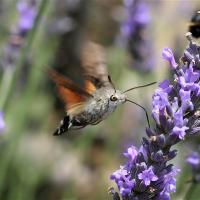This Forum will close on Wednesday 27 March, 2024. Please refer to the announcement on the Discussions page for further detail.
What is a Good Alternative to Wisteria?
 elliotp981
Posts: 105
elliotp981
Posts: 105
I am wondering this as I am sort of worried about biodiversity, this does not mean I will get rid of my wisteria but I am wondering if there are any native alternatives that may do the job just as well or even better (I wish for flowers, appeal to pollinators/wildlife and possibly scent/fragrance).
0
Posts
Why would you think they're not good for biodiversity?
You'll regret mentioning honeysuckle @robairdmacraignil
I live in west central Scotland - not where that photo is...
East facing, top of a hill clay-loam, cultivated for centuries (7 years by me). Birmingham
British bio-diversity flourished nonetheless a seeds, birds and insectscan blow or fly across water. Recent climate warming has sent some species north to stay cool but encouraged other species to move in or stay on over winter where before they would have migrated south.
if you want a bio diverse garden, tend to your soil and its organisms by adding plenty of organic matter, don't be too tidy, leave piles of stems/leaves/wood to provide shelter for small mammals and invertebrates, plant trees for blossom, fruits and shelter, plant shrubs and perennials plus some annuals that have different colours and flower forms to suit the feeding needs of a wide range of insects and try and have a spread of interest over the whole year. Keep at least one compost heap and make a pond, however small.
Be wary of planting invasive species that may spread outside your garden. The RHS website gives lists of plants which are good for pollinators.
https://www.ebay.co.uk/itm/295846053073?chn=ps&norover=1&mkevt=1&mkrid=7101533165274578&mkcid=2&itemid=295846053073&targetid=4584826055637461&device=m&mktype=&googleloc=&poi=&campaignid=412354546&mkgroupid=1299623041023876&rlsatarget=pla-4584826055637461&abcId=9300541&merchantid=87779&msclkid=e87bd811259f1b167489bcc1ee4cef83
Gardening in Central Norfolk on improved gritty moraine over chalk ... free-draining.
The 'perfect for pollinators' moniker that the RHS adopt for many species is only part of the story and I think people can be quite blinkered into thinking that if they see a bee on a plant then it must be great, which isn't necessarily true.
So to answer ElliotP's question, yes if you want to increase biodiversity and positively contribute to the environment you'd be much better off ripping your Wisteria out and replacing it with a native climber such as Lonicera Periclymenum.
If you're serious think Native.
However, as a keen amateur naturalist i'd have to disagree. Even many garden favourites are selectively bred versions of natives. Google Dan Pearson, he's a landscape architect that effectively reverse engineers our view on the traditional garden and traces many well known cultivars back to their natural forms. Piet Oudolf works a little like this too with his approach to US prairie style planting.